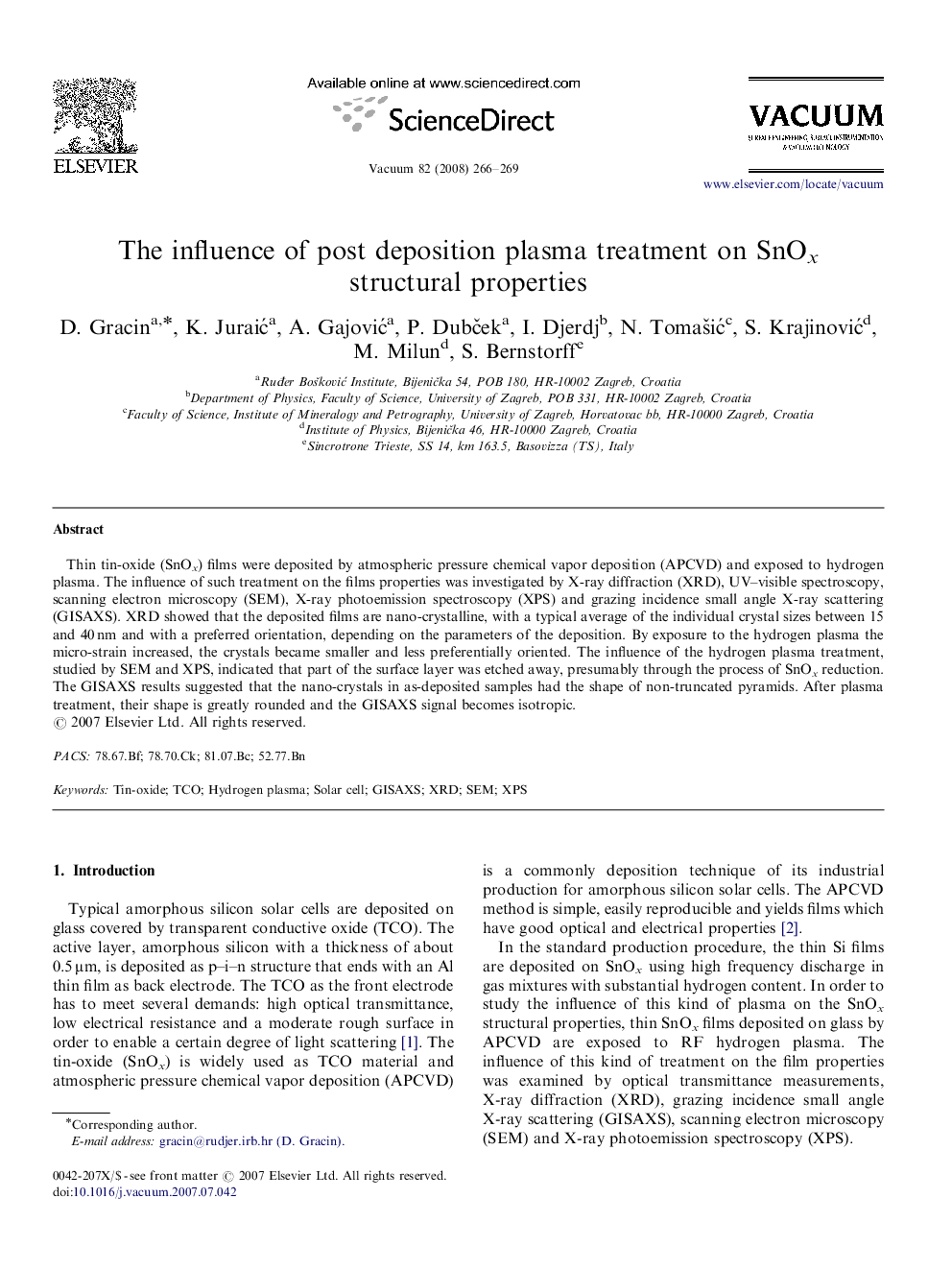| Article ID | Journal | Published Year | Pages | File Type |
|---|---|---|---|---|
| 1690474 | Vacuum | 2007 | 4 Pages |
Abstract
Thin tin-oxide (SnOx) films were deposited by atmospheric pressure chemical vapor deposition (APCVD) and exposed to hydrogen plasma. The influence of such treatment on the films properties was investigated by X-ray diffraction (XRD), UV-visible spectroscopy, scanning electron microscopy (SEM), X-ray photoemission spectroscopy (XPS) and grazing incidence small angle X-ray scattering (GISAXS). XRD showed that the deposited films are nano-crystalline, with a typical average of the individual crystal sizes between 15 and 40Â nm and with a preferred orientation, depending on the parameters of the deposition. By exposure to the hydrogen plasma the micro-strain increased, the crystals became smaller and less preferentially oriented. The influence of the hydrogen plasma treatment, studied by SEM and XPS, indicated that part of the surface layer was etched away, presumably through the process of SnOx reduction. The GISAXS results suggested that the nano-crystals in as-deposited samples had the shape of non-truncated pyramids. After plasma treatment, their shape is greatly rounded and the GISAXS signal becomes isotropic.
Related Topics
Physical Sciences and Engineering
Materials Science
Surfaces, Coatings and Films
Authors
D. Gracin, K. JuraiÄ, A. GajoviÄ, P. DubÄek, I. Djerdj, N. TomaÅ¡iÄ, S. KrajinoviÄ, M. Milun, S. Bernstorff,
